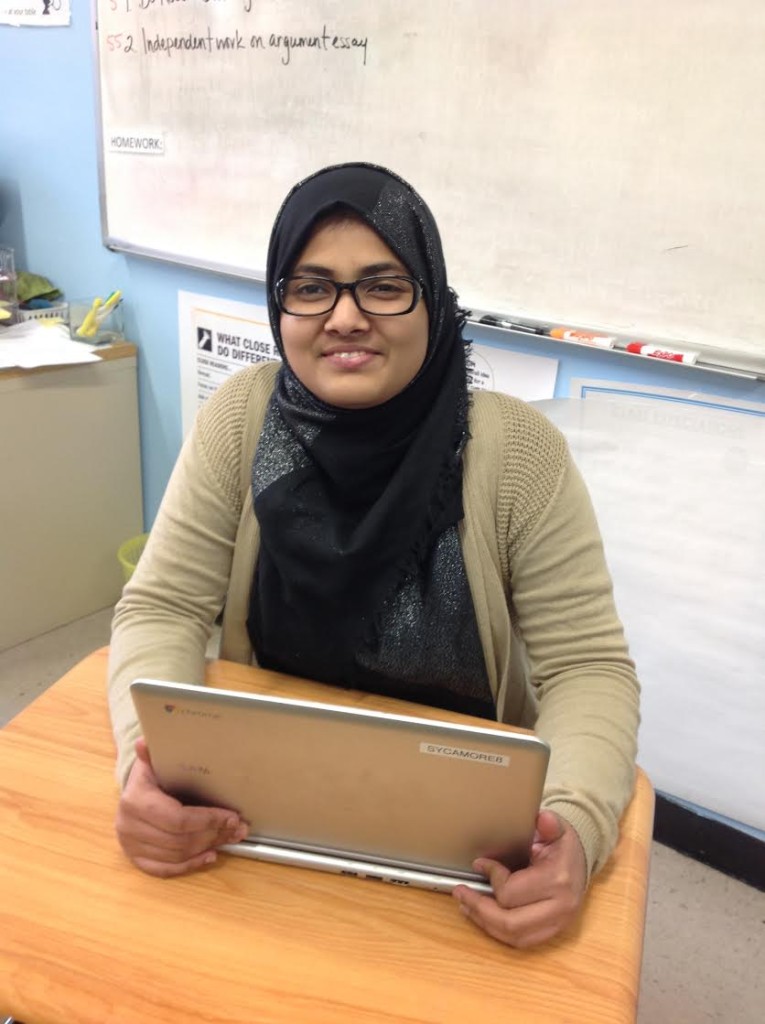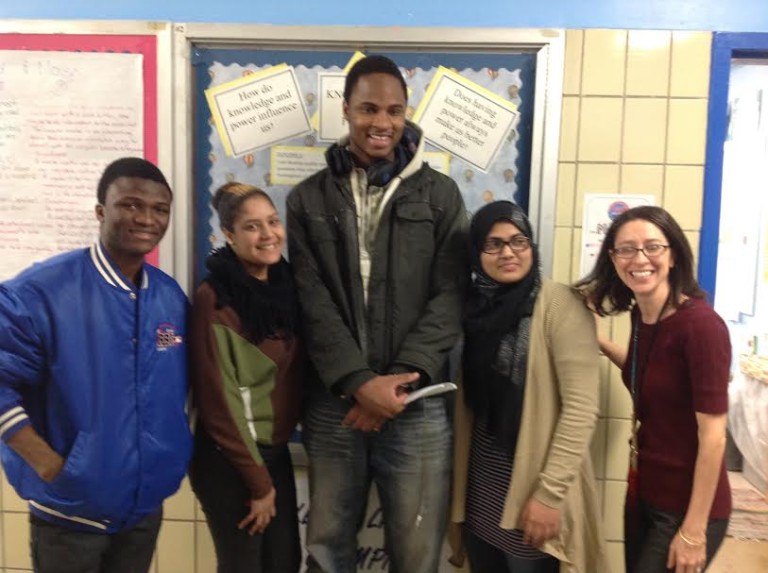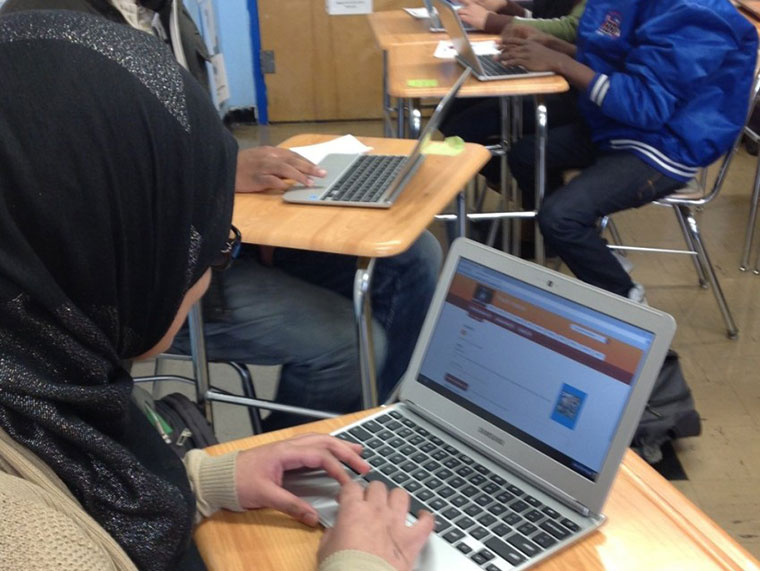Immigrant Teens in the South Bronx Learn the Art of Online Discussion
You never know what conversations you might come across on Youth Voices, a blog that is home to thousands of teen-written posts and comments on current events, gender inequality, and other topics. Last March, a discussion arose around the novel “Sold, by Patricia McCormick, about a Nepali girl named Lakshmi whose stepfather sells her into slavery.
A high school student from Senegal named Fatou, who is learning English, brought up the abuse of Senegalese children known as talibés. “They force student who’s studying the Quran to go out and beg for money and bring it to their teacher,” Fatou wrote. “And that is a type of slavery, just like Lakshmi’s.”

The students discussing Sold online attend International Community High School (ICHS) in the South Bronx. It is part of a network of 22 unique schools around the country intended for students who have recently entered the United States.
Jane Higgins, director of the NYC Writing Project, said students attending ICHS in the South Bronx experience nearly every obstacle a young person might face living in concentrated poverty while also contending with varying degrees of English literacy. Some students have been in the United States for up to four years, but others are far newer immigrants. More students arrive each week. Most are from the Caribbean, Mexico, and Central America, and some entered the country unaccompanied and undocumented.
In 2014, ICHS faculty saw a need to ensure that despite their students’ limited English and literacy skills, young learners at ICHS could take advantage of the educational opportunities online tools afford. Because many of their students lack internet and computer access at home, teachers grew concerned that their students could be left out of the literacy-rich online environment most of their peers inhabit.
So in 2014, the New York City Writing Project partnered with four teachers at ICHS to apply for an LRNG Innovation Challenge Grant to extend opportunities for student-driven online writing projects through the Youth Voices platform.
The LRNG Innovation Challenge grants stem from a partnership between the National Writing Project and John Legend’s Show Me Campaign to help educators extend time and space for connected learning.
After receiving the grant last year, ICHS teachers and students, and two NYC Writing Project teacher-consultants, came together in six afterschool workshops over six weeks as students extended their classwork by writing posts for authentic audiences. After learning more about Youth Voices in the workshops, Nick Deming, an English Language Arts teacher at ICHS, decided it would be the perfect platform for discussing Sold, and he prompted students with questions that kick-started a rich conversation.
Because teachers of English-language learners have a lot to balance, Higgins said, it was important to present Youth Voices as a curriculum that teachers could use rather than as just another layer on top of existing work. Higgins said the benefits of a Youth Voices-based curriculum go beyond just providing access to technology and the internet. Educators at ICHS also used it in classrooms to expand opportunities for connected learning—learning that lets students experience people, places, and things beyond school walls.
That approach worked during the discussion about Sold, as students weighed in on one another’s posts, adding depth and emotion to the conversation. A student named Cristina, for example, wrote: “As you say, ‘Human beings have the capacity to survive almost anything.’ I do agree, we always find a way to get over our problems, but I think that life is not only about moving on it’s also about justice and equality.”

“Youth Voices is not for word processing,” Higgins said. “It’s about helping students see beyond the window they look out.”
Opening new opportunities for that type of connected learning, she added, is important in ELL classrooms, where, because of students’ limited English skills, it can be challenging to move away from teacher-centric curriculum models.
“The introduction of Youth Voices attempts to break that down again,” Higgins said. “Suddenly, you have this vehicle that supports students to speak to one another, access language on their own, and engage in learning without it needing to be teacher-centered.”


